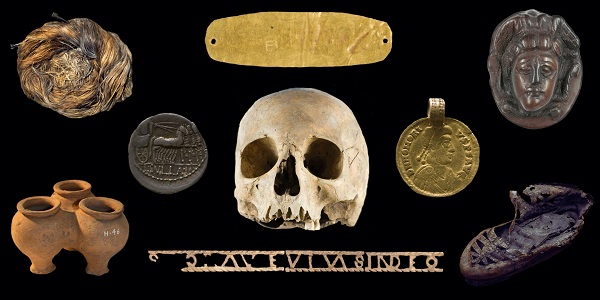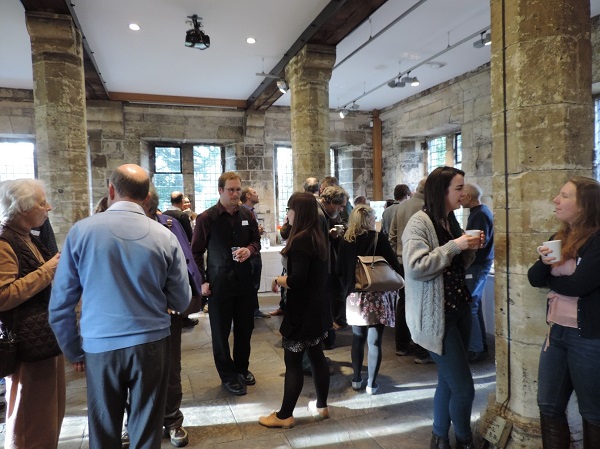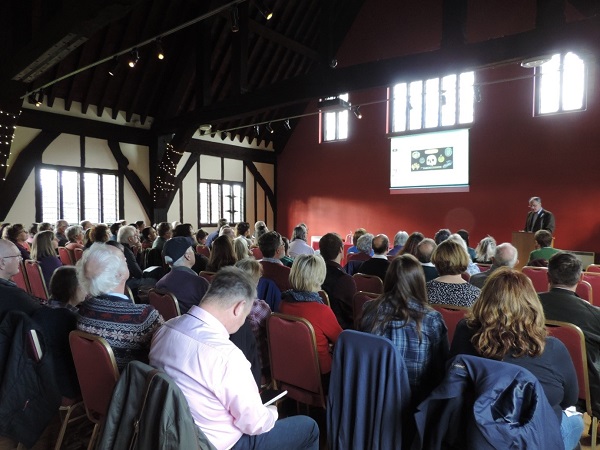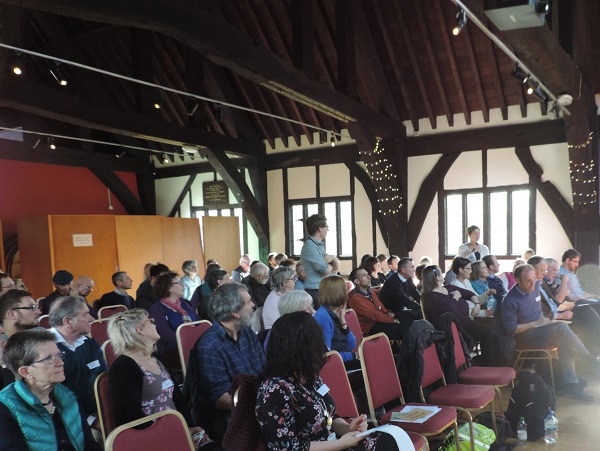‘Old Collections, New Questions’ Roman Study Day – by Emily Tilley, Collections Facilitator for Roman Archaeology
Emily Tilley, Collections Facilitator for Roman Archaeology at York Museums Trust, discusses the recent ‘Old Collections, New Questions’ Roman Study Day and the project’s next steps.
On Friday 24th February the Yorkshire Museum hosted 78 academics, museum professionals, volunteers, students, locals, and enthusiasts for a Study Day to launch the ‘Old Collections, New Questions’ Roman research project. Thank you to all who came, it was great to see such a fantastic turnout!

‘Old Collections, New Questions’ Roman Study Day event banner.
Many of York’s Roman artefacts have been housed at the Yorkshire Museum since its foundation in 1830. These numismatic and archaeological collections have Designated status, meaning that they have national and international significance.
The ‘Old Collections, New Questions’ project is an Arts Council England supported initiative to reinvestigate YMT’s Roman collections, using modern research approaches to discover brand new information. This cutting edge research will allow York Museums Trust to use and display these long-standing collections in new, innovative, and engaging ways, and to broaden knowledge more widely about York and Northern Britain during the Roman period.

Guests enjoying tea, coffee, and biscuits provided by Bradshaws.
The Study Day brought together a varied group of people who share a common interest in Roman York. It aimed to explore what is already known about YMT’s Roman collections, and the new directions the ‘Old Collections, New Questions’ research project could go.
Our five core focus questions were:
- What themes are emerging in Roman Studies?
- What is the potential of Roman museum collections?
- What (new) methods can we use on Roman collections?
- What partnerships can be built to achieve the above?
- How can we engage people with the results?
The day began with an introduction to the collections and the project, delivered by Natalie Buy (Curator of Archaeology) and Dr. Andrew Woods, (Curator of Numismatics). Dr. Patrick Ottaway, archaeological consultant and author of popular books Roman York and Roman Yorkshire, then spoke about how the collections relate to the archaeology of Roman York.
Steve Roskams, Senior Lecturer in Archaeology at the University of York, explained the research potential of viewing Roman York within the wider context of Yorkshire. Lastly, Dr. Dominic Perring, Director of the UCL Centre for Applied Archaeology, explored the significance of York within Roman Britain.
Dr. Perring described York as “The most exciting place for Roman archaeology anywhere in Britain”. We agree!
Patrick Ottaway discussing The Archaeology of Roman York.
After lunch, five case studies were presented which discussed previous research into the Roman collections, and potential future approaches. Dr. Rachel Wood spoke about her research into the locally produced Roman Crambeck ware pottery industry. Matthew Fittock, a PhD researcher from the University of Reading, explained his research into Roman pipeclay figurines, their use, and breakage patterns.
Dr. Hella Eckardt discussed the Diaspora Project, which looked into the origins of human remains in York, and revealed Ivory Bangle Lady’s fascinating story. Richard Brickstock then spoke about potential research approaches to coin finds in Yorkshire. Finally, Nathan Murphy, a PhD researcher from the University of Warwick, explained his work, which explores variations in the silver content of Roman coins across hoards from different periods of Roman history.
These presentations prompted some excellent discussion, and raised really promising ideas. Some of the potential research opportunities mentioned were:
- Looking at Roman York in relation to its rural surroundings.
- Comparing Roman York to other significant Roman cities, like London.
- Investigating how York adapted to the departure of the Romans.
- Improving the usability of the Yorkshire Museum paper archive and investigating the stories that this resource could tell about York antiquarian collectors of Roman materials.
- Revisiting human remains for DNA analysis.
- Looking into the composition and deposition of Roman coin hoards.
- Considering how environmental evidence can inform our understanding of archaeological sites and finds.
- Developing existing or recent research further, e.g. follow-up work on Crambeck ware.
Frances McIntosh (English Heritage) participates in the Study Day’s discussion segment.
We will also be looking at how we can offer outreach opportunities, build partnerships with a wide range of communities and organisations, and improve our digital offer by creating a more user-friendly and up to date online collections database.
These are only a few of the many directions the ‘Old Collections, New Questions’ Project could take, and curatorial staff will be working over the coming weeks to develop a research plan for the next stages of the project.
In the meantime, keep an eye out for project updates on Twitter at @YMT_YorkRomans and share your thoughts using the #YorkRomans hashtag, or email me at Emily.Tilley@ymt.org.uk if you have any questions or suggestions.



